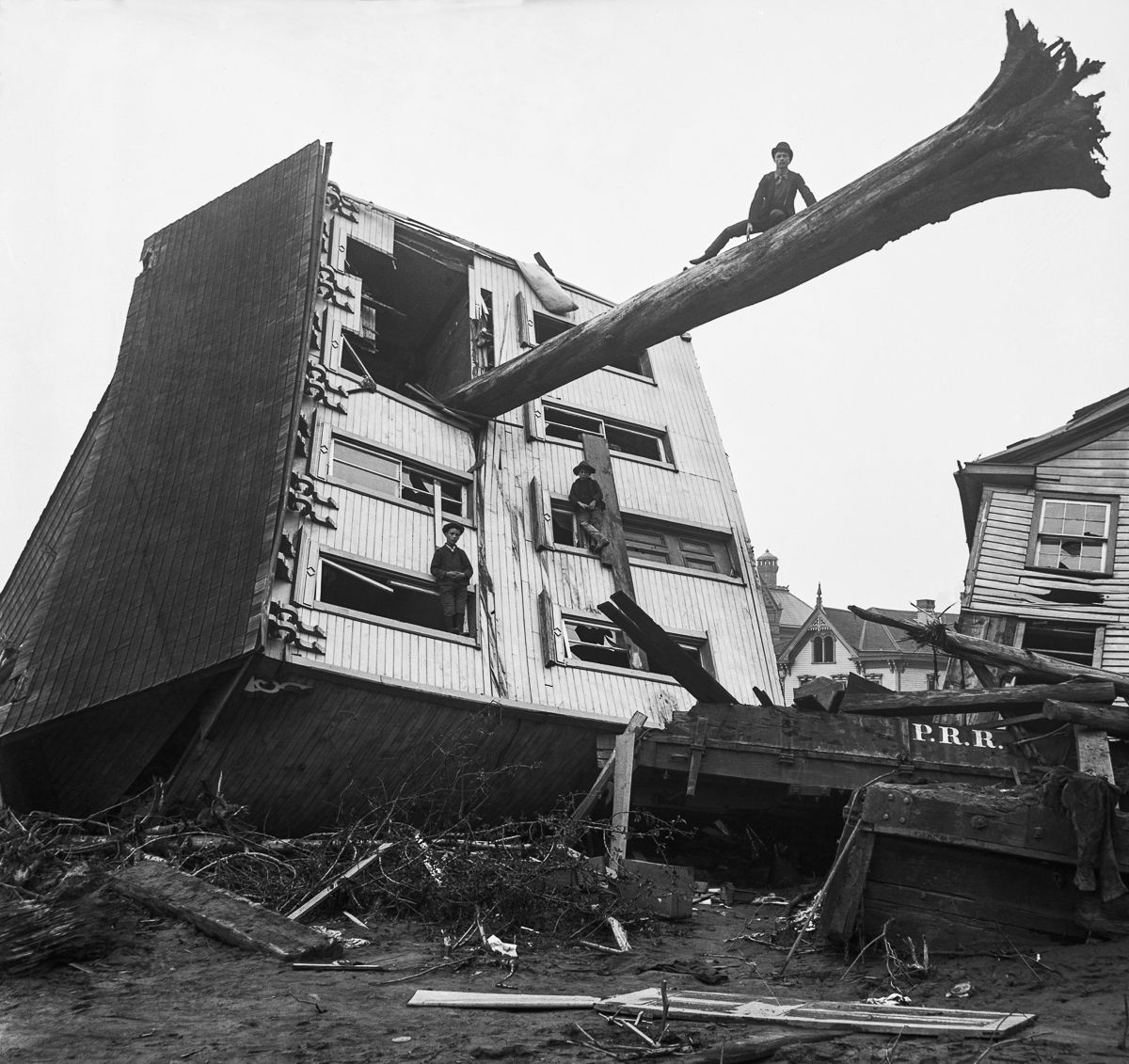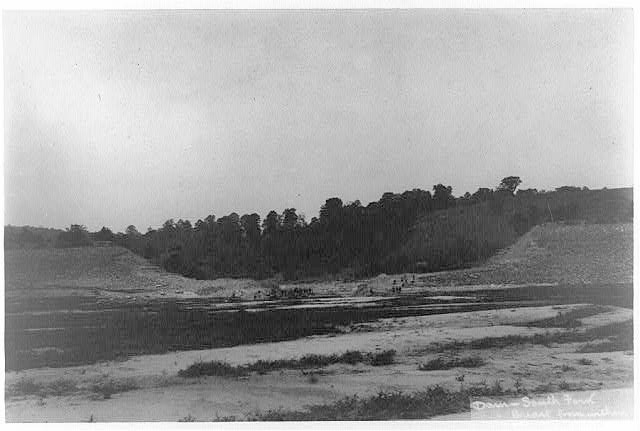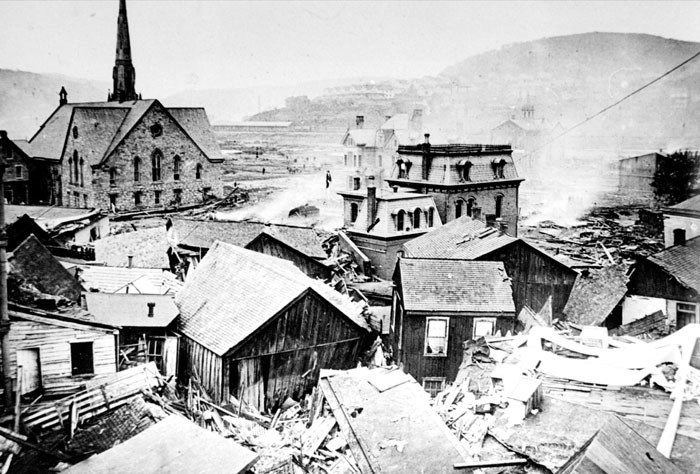


Engineering Ethics: The Johnstown Flood of 1889
Monday, February 18, 2019This edition of the Hamilton Minute comes from one of our newer employees, Tom Green, PE, PLS, CFM.
When Kristen and I interviewed him, we could tell a few things about him right away:
- He’s smart. He is a Licensed Professional Engineer (PE) in 7 states (He nearly doubles my number of licenses)
- He’s driven. He is a Licensed Professional Surveyor (PLS) and a Certified Floodplain Manager (CFM) (Although I’m a CFM, I’m not a PLS)
- He is likeable (one of those personality traits with which I struggle)
Tom joined us the second week of this January and he has immediately fit in. Since January can be a little slow, and he likes to be productive, he immediately earned his OSHA 30 certification (it took me three months), he successfully took on a “head scratcher” survey and has written two excellent blogs.
This blog is a thought provoker. It takes a classic dam failure incident that many civil engineers studied in college and gives it a different level of analysis. Not the old technical understanding of the failure, which we were all taught in school; but the social understanding of what an engineer MUST DO to protect the public.
Only a few weeks, and I’m already learning from him. Hope you do too, and enjoy the read!
As a good Eagle Scout, I can remember (most of) the 12 points of the Scout Law.
“A Scout is Trustworthy, Loyal, Helpful, Friendly, Courteous, Kind, Obedient, Cheerful, Thrifty, Brave, Clean, and Reverent.”
I’m proud of my childhood accomplishment of achieving the highest Scouting rank of Eagle Scout, as I should be. Those 12 points of the Scout Law are a pretty good guide of how any person can lead a good, morally fulfilling life. I became part of another larger group when I obtained my Professional Engineering license (more than a few years ago). I was only a Boy Scout for 7 years and came still remember those guiding principles. I will be a Professional Engineer for a much longer timespan. The Engineering profession affects millions of people and so I found myself thinking that there has to be some kind of guiding principles for such an important field. I found my answer in the Six Fundamental Canons of the National Society of Professional Engineers. They are:
Engineers, in the fulfillment of their professional duties, shall:
- Hold paramount the safety, health, and welfare of the public.
- Perform services only in areas of their competence.
- Issue public statements only in an objective and truthful manner.
- Act for each employer or client as faithful agents or trustees.
- Avoid deceptive acts.
- Conduct themselves honorably, responsibly, ethically, and lawfully so as to enhance the honor, reputation, and usefulness of the profession.
The 6th point states that:
An Engineer shall conduct themselves Ethically. I think that is a very strong word and we need to be reminded of it occasionally so as not to forget its importance in our esteemed field. People depend on engineers’ professional expertise and judgement on a daily basis. For example, when a person is driving over a bridge, they are unconsciously depending on the structural engineers who designed it and the construction engineers who built it. A good judge if it’s unethical or not, is that little voice in our head—the one that is telling us that it just isn’t right when a client is trying to convince us to use an inferior material or construction method just because it would save them money.
With that being said... 
I enjoy reading historical books and have read a few pertaining to the construction and engineering fields and I read an amazing one by the name of The Johnstown Flood by David McCullough. He is a phenomenal historical author who makes history so interesting that you can’t put the book down. I will briefly summarize this disaster to give you an understanding of the event and then look at it from an Ethical Standpoint as an Engineer.
The story begins
In 1836 when the Pennsylvania legislature approved funds for the building of a reservoir on the western slope of the Allegheny Mountains to supply extra water during the dry summer months for the new canal system which was slated to be routed from Johnstown to Pittsburgh.
The work began on the Western Reservoir above South Fork, PA in 1838, after about 400 acres of forest had been cleared. The site was selected for an earthen dam (850’ long and 62’ wide at the top) with a spillway with sluice gates to be able to regulate the water into the canal or to open during flooding to relieve pressure on the dam.
Johnstown before the flood
The project took until 1852 to complete due to various problems such as no available state funds, disease outbreak and weather delays. Here’s some of the characteristics of the as-built dam:
- 930 feet long x 72 feet wide
- Five (5) 24-inch pipes w/ valves were installed in the center in a stone headwall

The Pennsylvania Railroad completed the railroad run that connected Philadelphia to Pittsburgh in late 1852. This was disastrous for the State’s Canal system. This project cost over $240,000 (a huge sum at the time) and was now obsolete after only 6 months. Within two years after the railroad opened, the State legislature voted to sell the canal system. The Pennsylvania Railroad ended up buying the Canal System for a reasonable price in 1857 after it sat up for sale for 3 years with no interest. The South Fork Dam was part of the property that was purchased but the Railroad only purchased the property for the use of the Right-of-Way so they just let it sit. No maintenance was performed on it for 5 years until the dam partially broke during heavy rains in 1862. The break happened at the stone headwall containing the discharge pipes/valves. The main thing to note from this break was that there was little damage downstream because the discharge valves were opened to relieve the pressure on the dam. About this time, the wooden control tower for the discharge valves caught fire and burned down and was not replaced so the valves were stuck in the open position. So the lake was only about 10 feet deep for the next 17 years. A group of private investors had purchased the dam in 1875 and had the discharge pipes and valves sold for scrap and then let it sit for 4 years until they decided to create an exclusive vacation retreat for the extremely wealthy in 1879.
They had decided to revise the dam and spillway but they changed their mind after they learned of the cost and the amount of time that it would take. They dropped their plan and then decided to just repair the dam as quickly as possible so they could open the South Fork Fishing and Hunting Club. This is where it gets interesting. They put a railroad employee in charge of the repairs who had no construction experience. Witnesses stated later that they just boarded up the area of the old stone culvert break and just filled it with anything that they could find. Rock, mud, brush, hay and even horse manure were dumped into the void. They also did not replace the discharge pipes or valves. There were several setbacks to the construction schedule with flooding causing heavy damage to the work at several times.
In February 1881, the Cambria Iron Works (which was located in the valley downstream of the Dam) sent an engineer to review the dam repairs and make a report. His report basically stated that there were two major issues:
- There wasn’t any way to lower the water level to make repairs since they never reinstalled the discharge pipes and valves.
- The construction methods/materials used in the repairs had left a large leak right in the center.
He stated that it was just a matter of time until the dam failed and would cause significant damage and casualties downstream. The Cambria iron Works thought that it presented a significant danger, so they offered to help pay to repair the dam properly. The offer for help was refused and the Club was opened in the Summer of 1881.
Everything operated seemingly smoothly for the next several years for the Club’s members which consisted of 100 of the Pittsburgh financial elite such as Andrew Carnegie, future Secretary of the Treasury Andrew Mellon and future Attorney General Chase Knox, to name a few.
Then in late May 1889 there was significant rainfall, with the latest starting up during the night of May 30th. By the next morning the runoff was filling the lake at a rate of approximately an inch every 10 minutes. At 6:30am, the water level of the lake was only about 2-3 feet from the crest of the dam.
By noon, the water was overtopping the dam and they sent a telegraph to the next tower down the valley warning that the Dam was probably going to break and to get ready. When the message was eventually transmitted down to the Johnstown office, the operator didn’t warn anyone because he had heard it before and thought nothing would happen.
Around 1pm, a stream of water about 50 feet wide was flowing over the center part of the dam.
Around 2:15pm, the flowing water had eroded a notch in the center of the dam.
At 2:33pm, they sent another warning by telegraph which was finally received in the Johnstown office at 2:45pm.
Around 2:50pm, the first break occurred in the dam and witnesses said that it was large enough for a train to drive through.
Witnesses said that the water worked its way down little by little at that center point and then it seemed to explode out at 3:10pm.
The lake took about 36-37 minutes to empty and future engineering studies showed that a 40 foot high wave rushed down the valley at a rate and depth comparable to the Niagara River as it enters Niagara Falls. The wave rushed down the valley through several small towns destroying anything in its path. The height of the wall of water as it hit the town of Johnstown at 4:07pm was approximately 36 feet. The destruction of this town of nearly 10,000 people took only about 10 minutes. All together the flood killed 2,209 people make it one of the most deadly “natural” disasters in American History.

South Fork Dam (view from inside the dam) after the Flood looking out throught the broken dam

Aftermath of the Flood in Johnstown
Now to take a look at it from an Engineering Ethics Standpoint. You can look at the NSPE fundamental Canons and see that they failed to meet most if not all of them in the events and decisions leading up to the disaster:
Hold paramount the safety, health, and welfare of the public
The engineers for the private investors and the South Fork Fishing and Hunting Club definitely did not meet this principal. 2,209 innocent people were killed because of their actions. They held the cost and work schedule as the most important. Heck, the Cambria Iron Works had even offered to help pay for repairing it correctly and they refused the help and opened less than 6 months later. If they had at least installed the discharge pipes/valves, they could have been opened to relieve some of the pressure and possibly at least slowed down the breaking of the dam to give more warning down the valley.
*Photos taken from the Johnstown Area Heritage Associateion website ith no copyright infringement intended
 Perform services only in areas of their competence
Perform services only in areas of their competence
The person put in charge of repairing of the dam had no construction experience.I’d have to say that this principle wasn’t met either.
Issue public statements only in an objective and truthful manner
The decision makers for the Club completely ignored and discredited the Report that the engineer from the Cambria Iron Works presented regarding dam repairs in early 1881.Here they had valid points from a competent party not involved with the construction.They could have at least hired another independent party to do another analysis of the dam but they chose not to.I would have to say no for this principle also.
Many things could have and should have been done differently which would have prevented this tragedy from occurring.
In closing, the next time that you are faced with a decision that just doesn’t seem right, please listen to your conscience and take the proper course of action. Even compromising our ethics on small issues (that may not drastically affect others) will eventually erode our integrity just the same as the waters that overtopped the dam and eventually destroyed it.
“Sometimes the hardest thing and the right thing are the same”. – Unknown Author
Tom J. Green, PLS PE